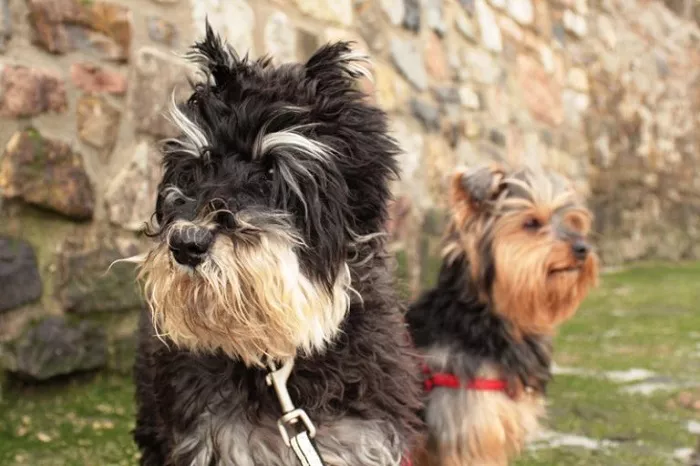Trimming your Affenpinscher‘s nails is an essential part of their grooming routine. Overgrown nails can lead to discomfort and potential health issues for your beloved pet. In this comprehensive guide, we will walk you through the process of cutting Affenpinscher nails safely and effectively. Whether you’re a seasoned dog owner or new to the breed, this article will provide you with the knowledge and confidence to keep your Affenpinscher’s nails in great shape.
Understanding the Importance of Nail Care for Affenpinschers
Before we delve into the nail-cutting process, it’s essential to understand why maintaining your Affenpinscher’s nails is crucial:
1. Avoiding Overgrowth: Overgrown nails can cause pain and discomfort when your Affenpinscher walks. They may even alter their gait and posture, leading to joint issues.
2. Preventing Injury: Long nails can easily break or split, potentially causing bleeding and infections.
3. Maintaining Mobility: Properly trimmed nails enable your Affenpinscher to move comfortably and maintain their active lifestyle.
Tools Required
Before you start cutting your Affenpinscher’s nails, gather the necessary tools:
Dog Nail Clippers: Invest in quality dog nail clippers, which come in various types, including guillotine-style, scissor-style, and grinder-style. Choose the one that you are most comfortable using.
Styptic Powder: Have styptic powder on hand to stop bleeding in case you accidentally cut too close to the quick.
Step-by-Step Guide to Cutting Affenpinscher Nails
Now, let’s walk through the process of trimming your Affenpinscher’s nails:
Step 1: Familiarize Your Dog with the Clippers
Before you start, allow your Affenpinscher to become accustomed to the sight and sound of the clippers. Gently touch their paws and nails with the clippers to reduce anxiety.
Step 2: Identify the Quick
The “quick” is the blood vessel inside the nail. It’s essential to avoid cutting into the quick, as it can be painful and cause bleeding. In dogs with light-colored nails, the quick is easily visible as a pinkish area. In Affenpinschers with dark nails, be cautious and trim small amounts at a time.
Step 3: Choose the Right Time and Place
Pick a quiet, well-lit area for nail trimming. Ensure your Affenpinscher is calm and relaxed before starting the process. You may want to have a friend or family member assist you by holding your dog gently.
Step 4: Begin the Cutting Process
Hold your Affenpinscher’s paw firmly but gently. Carefully trim a small amount of the nail at a time, aiming to stay just above the quick. If you’re uncertain, it’s better to trim less rather than risk cutting too close.
Step 5: Use Styptic Powder if Needed
If you accidentally cut into the quick and there’s bleeding, apply styptic powder immediately to stop the bleeding. You can also use a wet cotton ball to apply gentle pressure.
Step 6: Repeat for All Nails
Continue these steps for all of your Affenpinscher’s nails, taking breaks if needed to keep your dog comfortable.
Conclusion
Regular nail care is essential for the comfort and well-being of your Affenpinscher. By following this step-by-step guide and using the right tools, you can ensure a safe and stress-free nail trimming experience for both you and your beloved pet.
FAQs about Affenpinscher dogs:
Q1: What is an Affenpinscher?
A1: An Affenpinscher is a small toy breed known for its charming and mischievous appearance. They are often referred to as “Monkey Dogs” due to their expressive faces and lively personalities.
Q2: Where do Affenpinschers originate from?
A2: Affenpinschers originate from Germany, where they were originally bred as ratters and companions for households and shops. The name “Affenpinscher” means “Monkey Terrier” in German.
Q3: What are the typical physical characteristics of Affenpinscher dogs?
A3: Affenpinschers are small dogs with a sturdy build. They have a distinct monkey-like face with a short, broad nose, round eyes, and a prominent jaw. Their coat is wiry and dense, often seen in black, gray, silver, or black and tan colorings.
Q4: What is the temperament of Affenpinscher dogs?
A4: Affenpinschers are known for their lively, playful, and confident personalities. They are often described as bold and affectionate with their owners but can be wary of strangers. They have a lot of energy and love to play.
Q5: Are Affenpinschers good with children and other pets?
A5: Affenpinschers can be good with older, considerate children if socialized early. They tend to be territorial and may not always get along with other dogs, so careful introductions are essential.
Q6: How do you train an Affenpinscher?
A6: Affenpinschers are intelligent but can be independent and stubborn. Positive reinforcement training methods work best with this breed, along with consistency and patience.
Q7: Do Affenpinschers require a lot of exercise?
A7: While they are active dogs, Affenpinschers are small and can get much of their exercise indoors through play. They still need daily walks and mental stimulation to stay happy and healthy.
Q8: What are common health issues in Affenpinscher dogs?
A8: Common health concerns for Affenpinschers include patellar luxation (kneecap dislocation), heart issues, hip dysplasia, and dental problems. Regular veterinary check-ups are crucial.
Q9: Are Affenpinschers suitable for apartment living?
A9: Yes, Affenpinschers can adapt well to apartment living due to their small size and moderate exercise needs. However, they do enjoy having access to outdoor play areas.
Q10: How long do Affenpinschers typically live?
A10: The average lifespan of an Affenpinscher is around 12 to 14 years when properly cared for.
Q11: Do Affenpinschers shed a lot?
A11: Affenpinschers have a wiry, non-shedding coat that requires regular grooming and occasional hand-stripping to maintain its texture.
Q12: What is the Affenpinscher’s history and role as a rat hunter?
A12: Affenpinschers were originally bred in Germany to hunt rats and other small vermin in homes, stables, and shops. Their name, which means “Monkey Terrier,” reflects their lively and agile nature.


